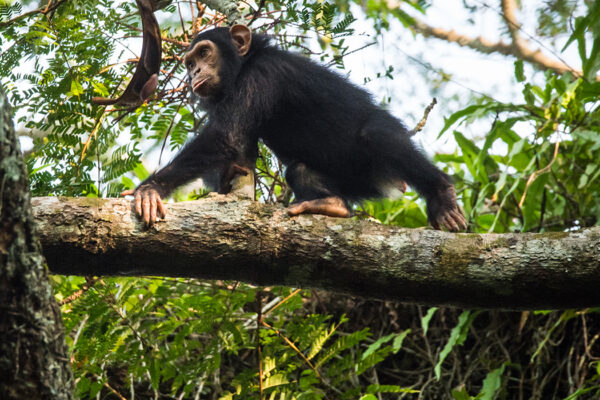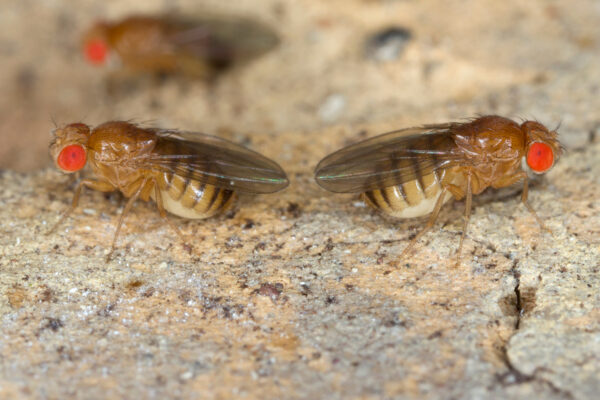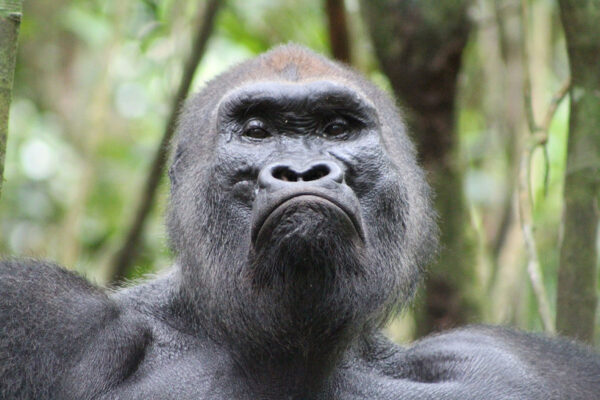Endangered great apes get malaria, just like humans. New evidence from wild bonobos shows us the infection harms them, too.
Malaria is a devastating disease caused by parasites transmitted through the bites of infected mosquitos. For humans, symptoms start out mild — fever, headache and chills — but malaria infection can be fatal within 24 hours. For apes, little is known about what malaria sickness looks like, or how deadly it is.
“We don’t yet have a good handle on the symptoms and mortality risk,” said Emily Wroblewski, an assistant professor of biological anthropology in Arts & Sciences at Washington University in St. Louis. “The number of infected animals in captivity that have exhibited disease symptoms has been limited. Sometimes they show symptoms like fever and other things that might be associated with infection, and sometimes not. And in the wild these things are very difficult to track.”
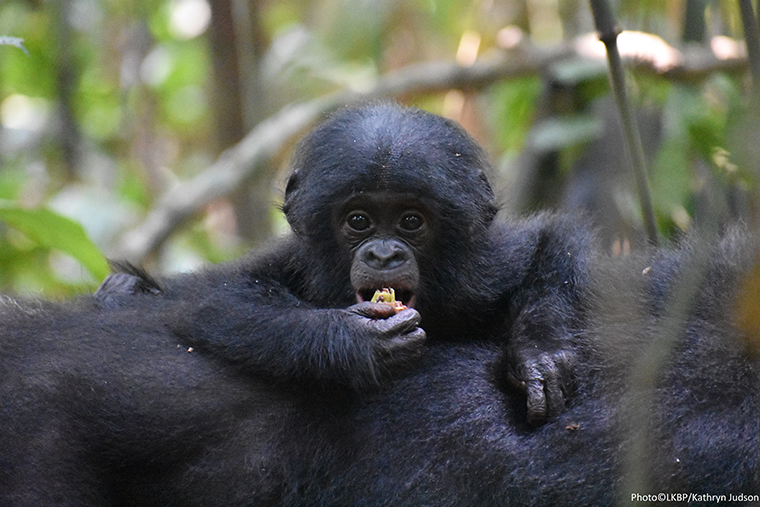
Scientists know that malaria infection is widespread across the geographic ranges of wild chimpanzees and gorillas (they know this because researchers detect parasite DNA in the apes’ feces). In fact, the African great apes harbor at least 12 different Plasmodium species, seven of which are closely related to the human parasite that causes about 95% of human deaths.
But a certain kind of ape, the bonobo, so far has escaped infection in all but two locations where researchers have studied them in the wild. Scientists can compare infected populations — where 38% of bonobos had detectable parasite DNA in their feces — to uninfected bonobos from 10 other sites across their natural range in the Democratic Republic of Congo.

This difference gives the researchers an opportunity to try to figure out some basic facts about how malaria impacts the health and mortality of great apes.
Wroblewski’s new research, published Feb. 23 in Nature Communications, finds that in areas where malaria infection has been detected, bonobos are more likely to have particular variants of an immune gene (Papa-B). The bonobo variants are very similar to a human variant (HLA-B*53) associated with protection from developing severe, and more deadly, disease. This suggests that similar immune defense mechanisms may be used in these two species.
“To us, this means that there is a selective advantage to individuals having these protective variants, because those individuals are more likely to survive their infection and reproduce, causing that variant to rise in frequency,” Wroblewski said.
“Seeing infected populations differ from uninfected populations in this immune trait suggests that it is because bonobos experience increased mortality or costs to their reproductive success because of their infection,” she said. “The differences between the bonobo populations provides the first evidence of any kind, albeit indirect, that a wild great ape suffers any sort of consequences from their infection.”
Pattern of protection
One of Wroblewski’s collaborators on the paper, Beatrice Hahn from the University of Pennsylvania, has documented the patterns of malarial infection in the great apes over recent decades. Her previous work helped establish that the most deadly human malarial parasite got its start with a jump from gorillas.
“Understanding the natural history and transmission patterns of malaria in our closest relatives is critical to gauge future transmissions,” Hahn said.
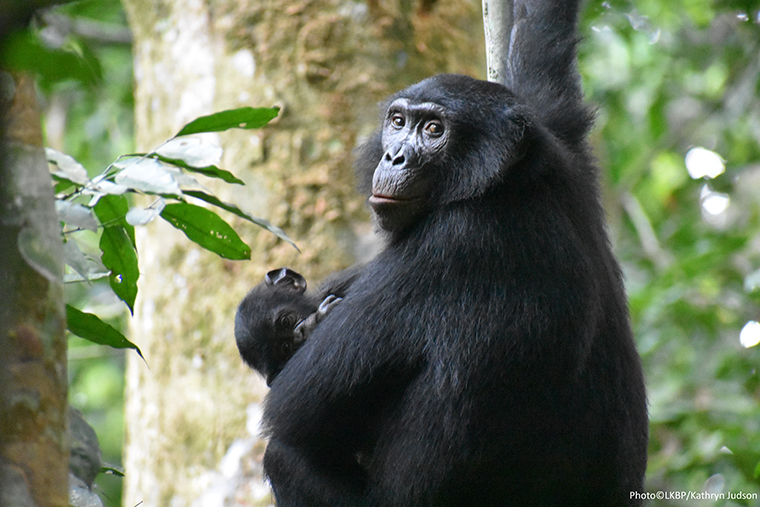
This research avoided any handling or other disturbance of wild bonobos because the DNA used for sequencing was extracted from feces that were collected after they were deposited.
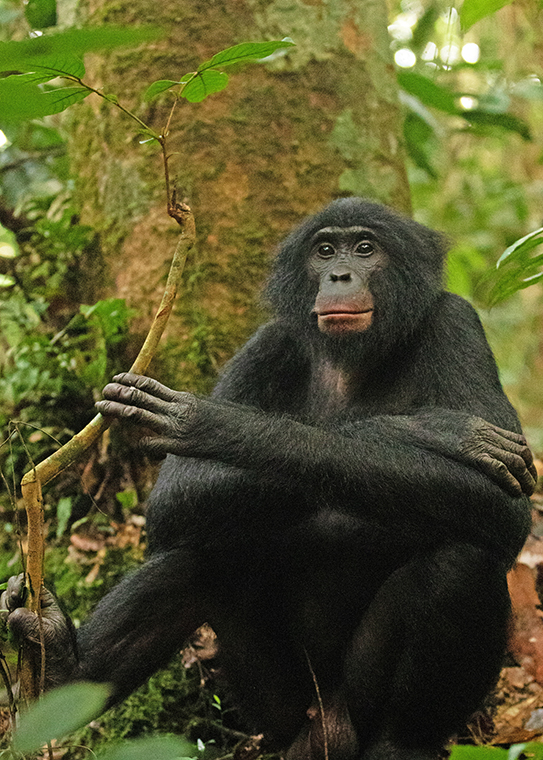
The scientists were particularly intrigued to observe that the immunogenetic pattern observed in infected bonobos is very similar to what is observed among human populations experiencing malaria infection in Africa.
“This is notable because these immune genes evolve very rapidly while trying to keep up with rapidly evolving pathogens,” Wroblewski said. “Because of this, it is very unusual to observe a pattern that is shared between humans and their closest living relatives.”
She said that scientists should further investigate how this particular immune gene variant protects individuals — both bonobo and human — because understanding that mechanism might lead to an additional source of treatment or vaccination for humans.
It’s also important to understand how diseases are affecting the apes because they are endangered species. Disease is always a threat to their survival as they come under more and more pressure from human activity.
“With the numerous ways in which each host could adapt in response to their infection,” Wroblewski said, “I find it remarkable that both humans and bonobos respond to their infection in the same way.”
Wroblewski, E.E., Guethlein, L.A., Anderson, A.G. et al. Malaria-driven adaptation of MHC class I in wild bonobo populations. Nat Commun 14, 1033 (2023). https://doi.org/10.1038/s41467-023-36623-9.
